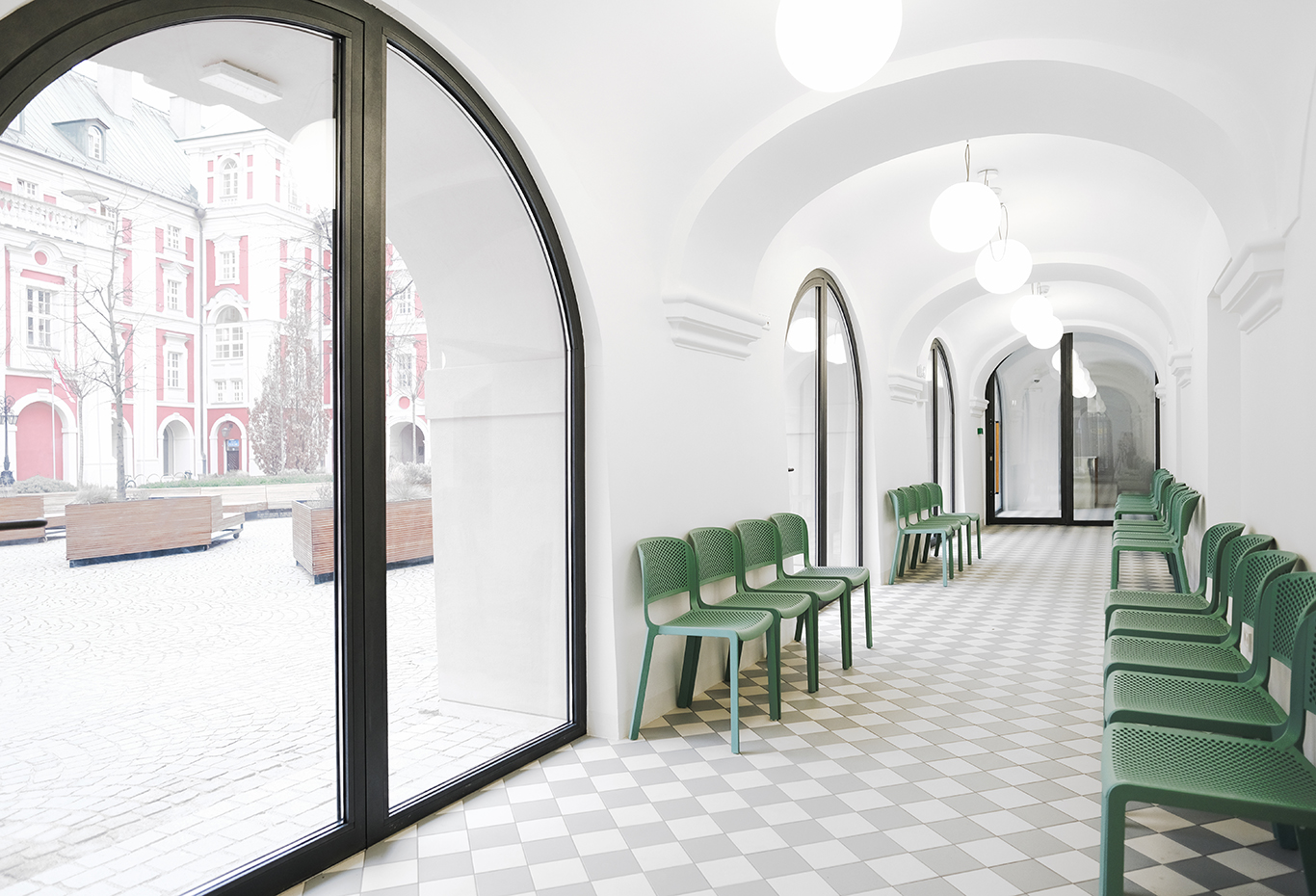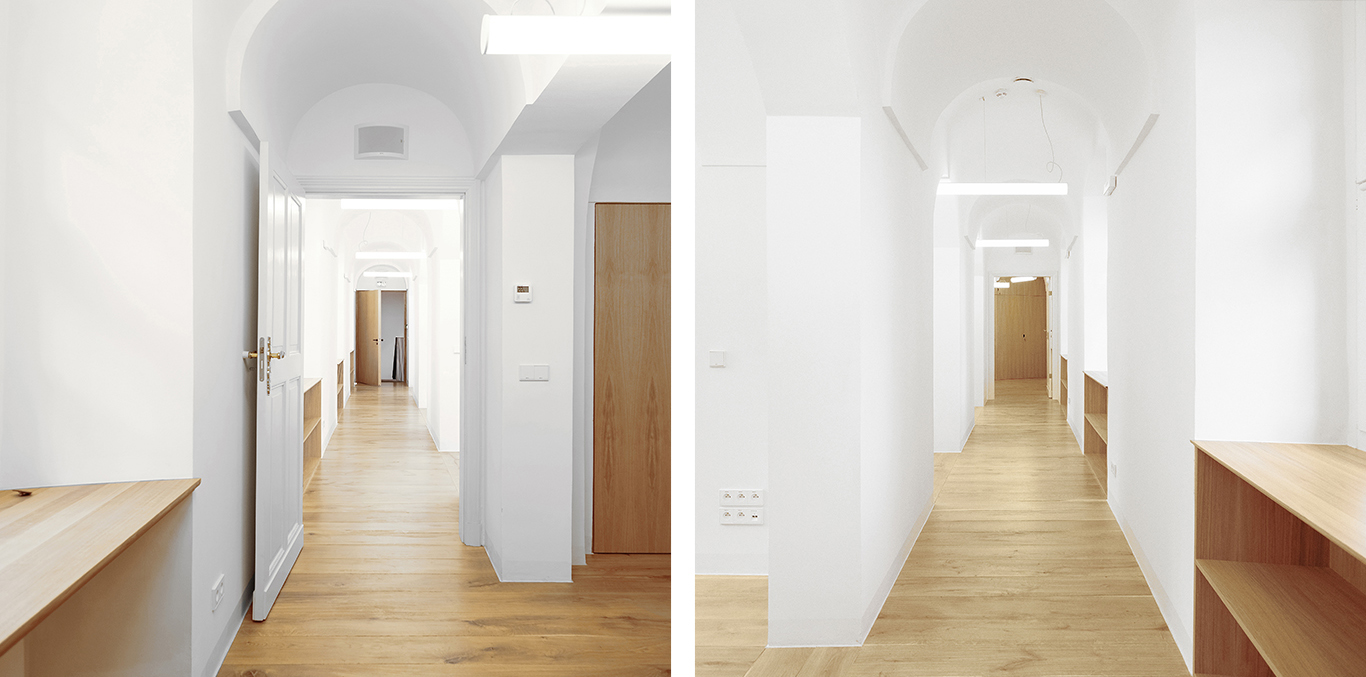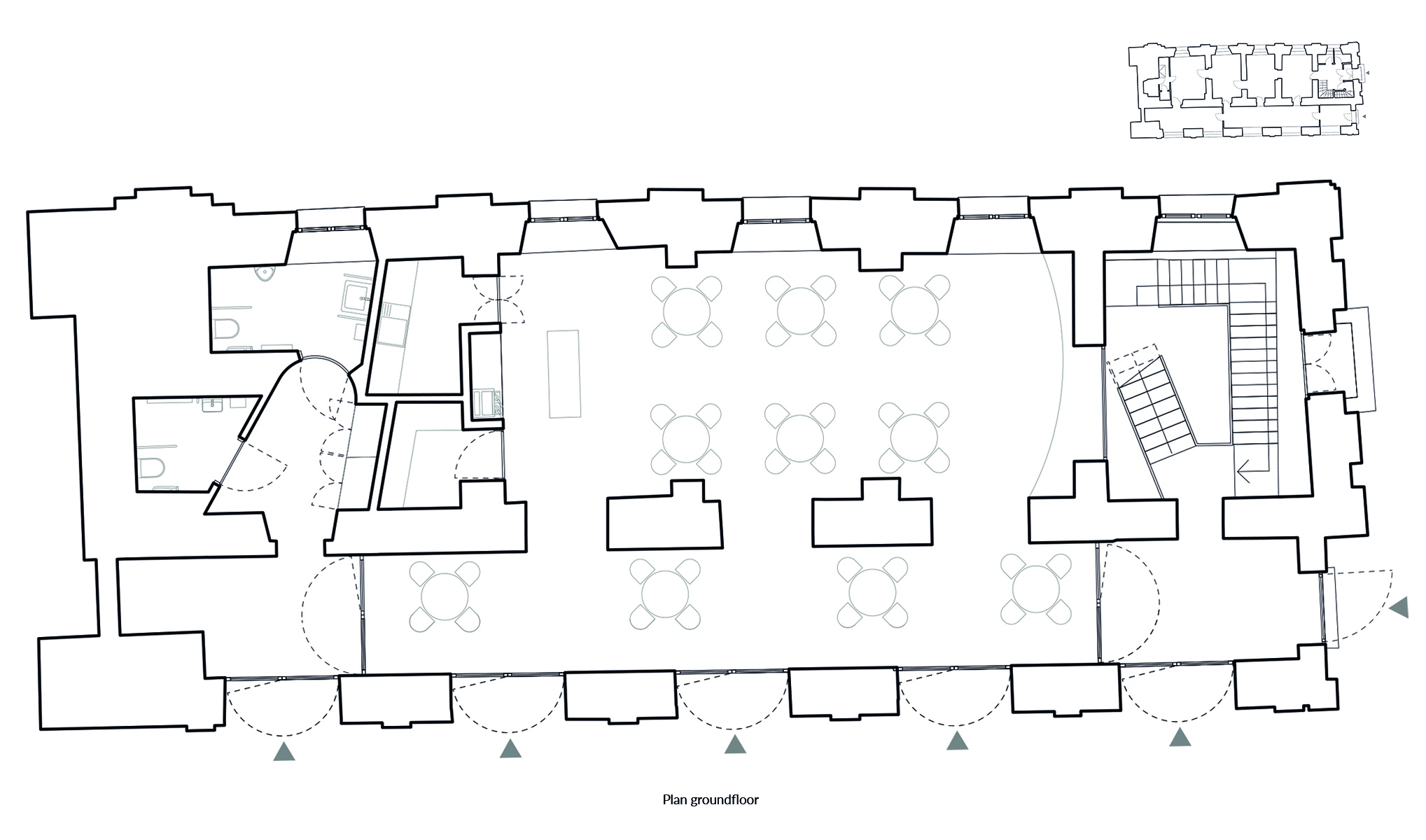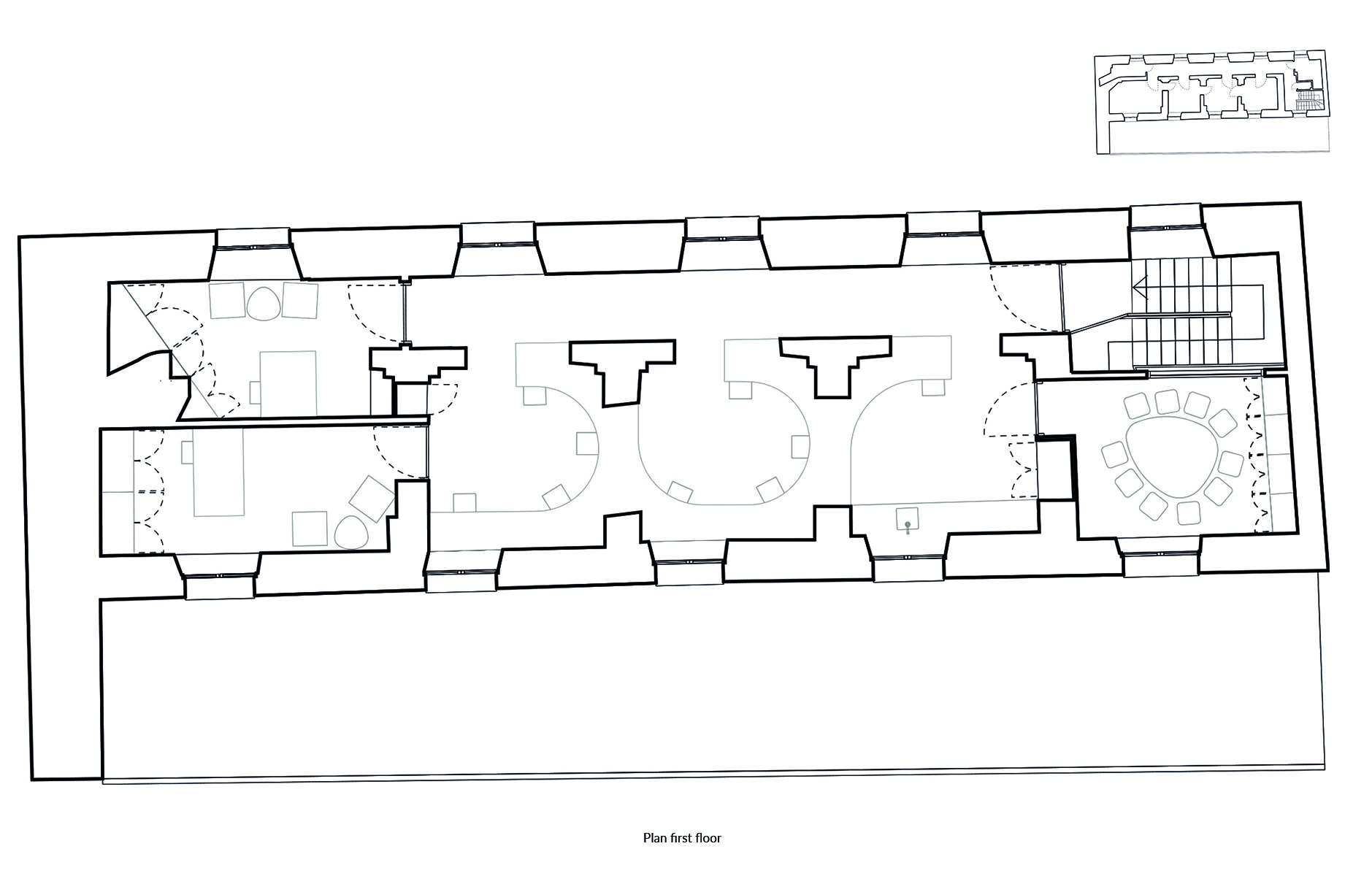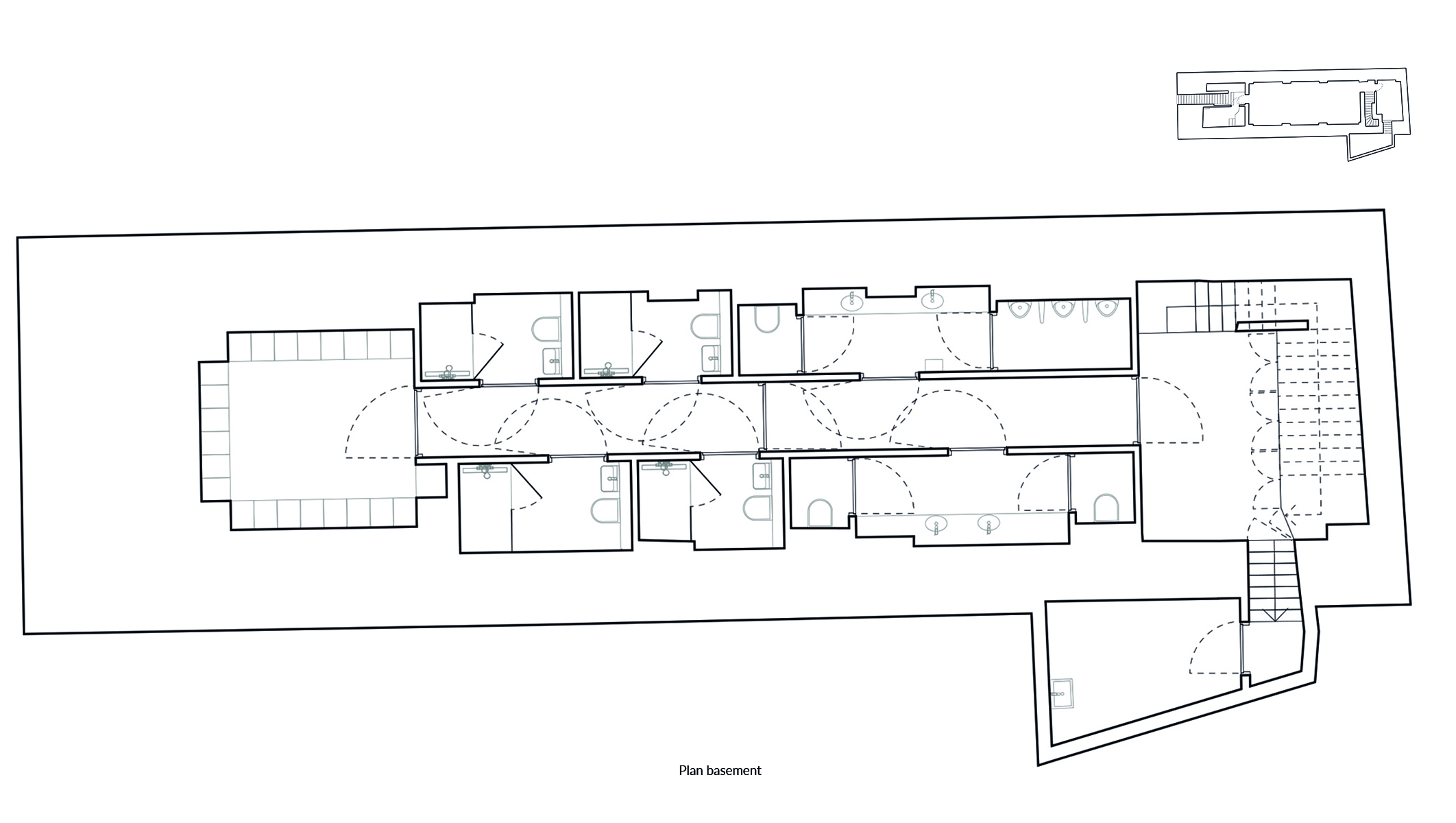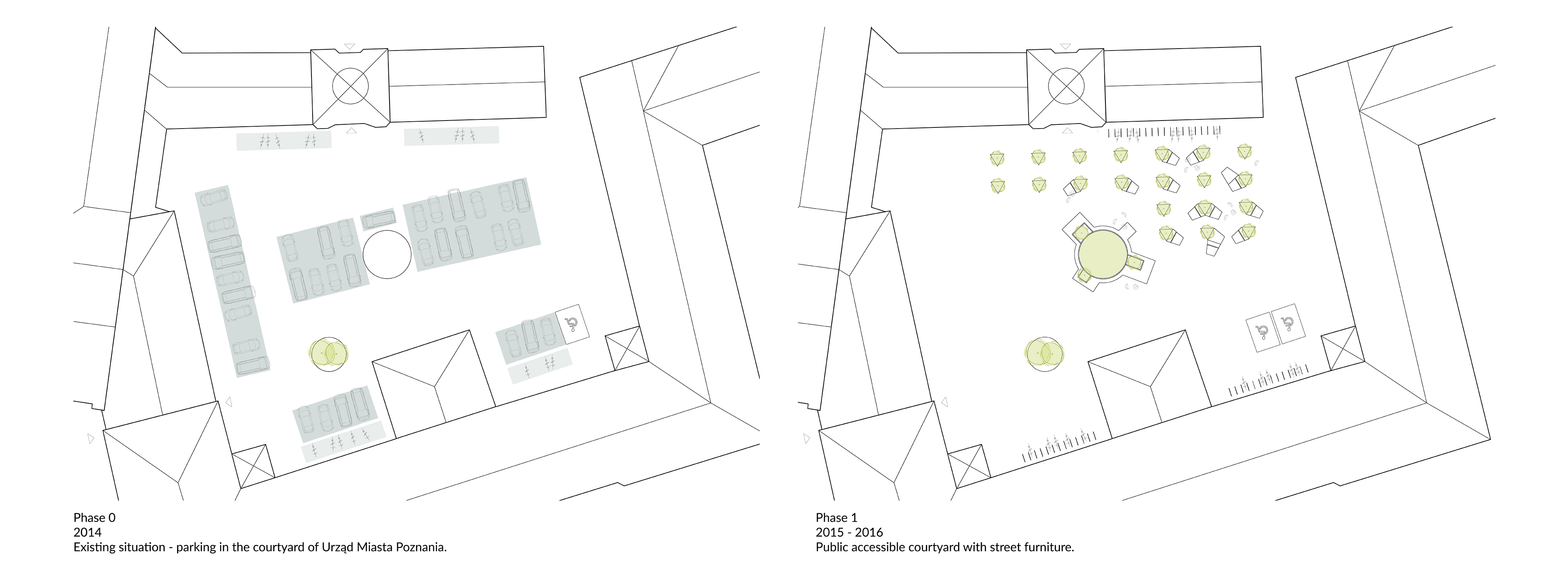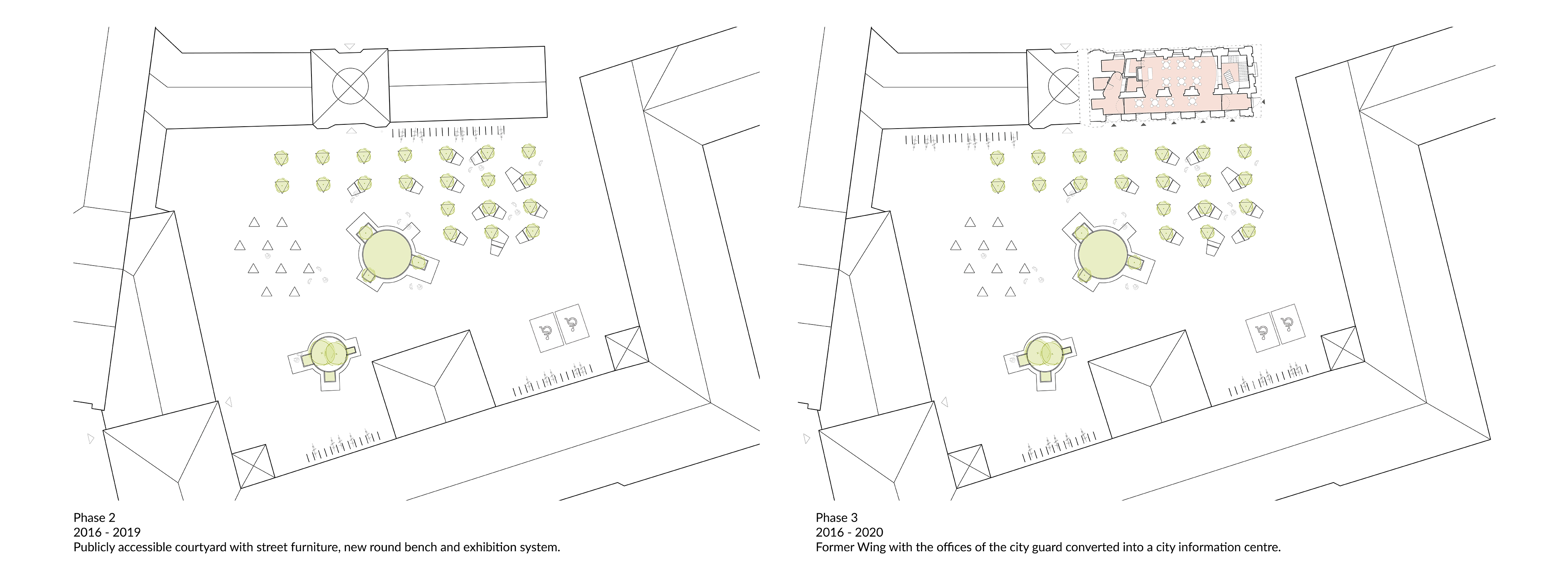
Refurbishment of a historical building near Plac Kolegiacki in Poznan
| Location | Poznań, Poland |
| Year | 2017 - 2020 |
| Status | Completed |
| Client | City Hall Poznan |
| Program | Conference space, tourist information, offices, public toilets |
| Area | 505 m2 |
| Team | Jola Starzak, Dawid Strębicki, Bartosz Bisaga, Martyna Karnaś, Michał Motyl, Salvatore Davide La Manna, Luis Gómez Soriano |
| Photography | Danil Daneliuk |
| Text | Mateusz Nowacki |
The reconstruction of the historic Building C at Plac Kolegiacki is part of the gradual revitalization of the area at the City Hall. Building C is the eastern part of the northern wing of the Jesuit College, which was designed to close the quadrilateral courtyard. The main idea behind the project was to open the space of the historic building and create a meeting place for residents of Poznań and guests visiting the city. Thanks to the demolition of the walls, the existing narrow and claustrophobic surface of the ground floor has gained a more public and spatial character (friendly also for people with physical disabilities) which ensures multifunctionality: thanks to this the ground floor will be both a place of activity of a small cafe; a space where social consultations will take place, but above all, it will be open to residents and tourists who will be able to meet here, rest and use the space of the building. An important element connecting the building with the courtyard are steel, openable windows which allow both spheres to penetrate, thus making the border between the outside and the inside more fluid and flexible. In the basement designed changing rooms and showers for people coming to work on bicycles and additional toilets for employees and users of the complex at the City Hall. The floor space - fulfilling the office function for the headquarters of the Poznań Local Tourist Organisation (PLOT) - thanks to the new partition walls gained in spaciousness, thus ensuring an improvement in work comfort. All levels have been connected by a new common staircase made of concrete which replaced the existing two separate staircases, making it more pleasant and easier to move around the building.
Due to the historic character of the building which is the last stage of the construction of the new College in 1748-1751, specially selected natural materials were used in the project which corresponds to the historical past of the building. The corridor and common spaces in the basement were finished with brick tiles, stoneware tiles were used in the arrangement of bathrooms while on the first floor it was decided to place an oak floor. The whole project is complemented by furniture covered with ash veneer.
